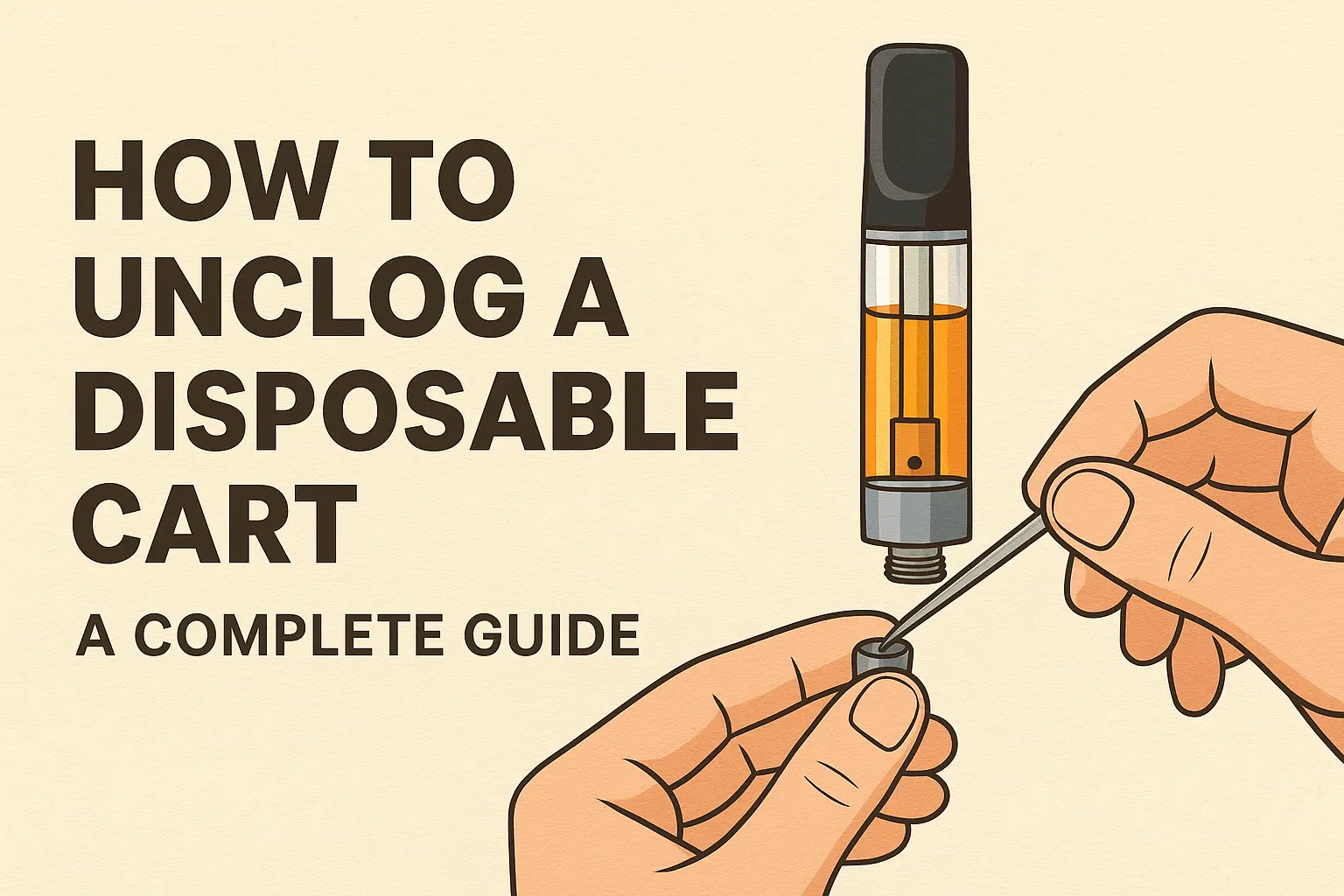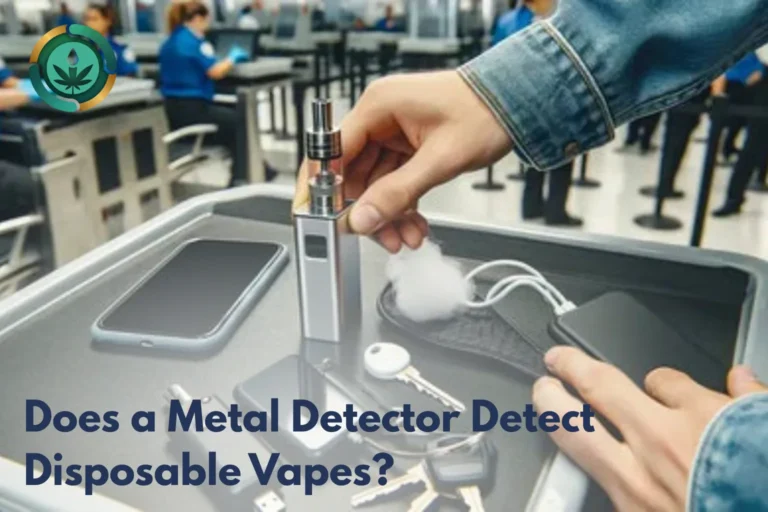
Introduction
Disposable vape cartridges (or disposable carts) offer convenience and portability, but one frustrating issue many users encounter is clogging. A clogged cart can block airflow, reduce vapor production, or result in no draw at all — even when you know there’s oil left inside.
In this guide, you’ll learn why disposable carts clog, how to safely unclog them using simple proven methods, when to stop troubleshooting and replace the device, and how to prevent clogs in the future. All methods here are based on common best practices, manufacturer recommendations, and user experience. Use at your own discretion; safety always comes first.
What Is a Disposable Cart, and Why Do They Clog?
A disposable cart is a pre‐filled, usually non‐refillable vaping device. It typically contains oil (e.g. THC, CBD, hemp oil, etc.), a wick or heating element, a mouthpiece, and airflow channels. The design aims for simplicity—no need to refill or clean (ideally).
But the simplicity comes with trade‐offs: components are small, tolerances tight, and oil properties can vary widely. These variables lead to clogging. Here are the main causes:
- Viscosity of the Oil
Thick oils, high terpene content, or additives can make oil more viscous, especially in cooler temperatures. Thick oil doesn’t flow as readily through wicking material and small vents. - Residue Build-Up
Over time, vaporized particles, oil remainders, and plant compounds (in hemp or similar) can accumulate in the airflow path and mouthpiece. This builds up blockage gradually. - Improper Storage Conditions
Extreme cold can thicken the oil; extreme heat can degrade it or cause leakage; exposure to humidity or direct sunlight can cause condensation or chemical changes. All these can contribute to clogging. - Infrequent Use
When a cart sits unused, the oil may settle, crystalize, or separate. The wick might dry or the oil near the mouthpiece or airflow choke points hardens. Then the first few draws are weak or no draw. - Hardware / Design Limitations
Cheap or poorly designed cartridges may have small vents, poorly placed wicks, inferior seals, or materials that retain residue. These increase the odds of clogging.
Signs Your Disposable Cart Is Clogged (Not Just Empty)
Before attempting any fixes, it’s important to confirm that the issue is indeed a clog — not a depleted or defective cartridge.
If you see visible oil remaining in the cart but experience weak or no vapor output, there’s a strong possibility that the cartridge is clogged. Often, users notice resistance or tightness when trying to inhale. This restricted airflow suggests that something is blocking the vapor path.
Another telltale sign of clogging is the presence of gurgling or bubbling noises during use. This often indicates that oil or condensation is trapped in the airflow channel, disrupting smooth vapor production. In some cases, oil may appear pooled near the mouthpiece or wick area, yet the device still produces no vapor — another strong indication of a blockage between the wick and the mouthpiece.
Additionally, if the cart begins to produce a strange or harsh taste, but not the distinct burnt flavor associated with a burnt coil, this may point to a partial clog causing uneven heating or restricted airflow.
If you experience any combination of these issues — difficult draws, gurgling, oil still visible inside, or weak vapor output — then it’s likely your disposable cart is clogged and can potentially be fixed using the methods below.
How to Unclog a Disposable Cart — Safe Methods
Below are reliable, relatively risk‐low methods to clear a clog. Always proceed gently; disposable carts are delicate.
1. Warm the Cart Gently
- Body heat: Hold the cart in your hands, or place it in your pocket for a few minutes.
- Warm water bath (indirect): Seal the cart in a plastic bag, then place it in warm (not hot) water for a few minutes. Do not submerge the connections or battery end.
- Hair dryer on low setting: Keep a safe distance (several inches), blow warm air briefly. Avoid overheating or directing heat for too long.
- Purpose: warming thins the oil so it flows better through wick and airpath. Helps with cold‐induced thickness or mild blockage.
2. Gentle Puffing / Airflow Pressure
Without activating the cart (if it’s draw-activated), take a few short, soft puffs to build gentle air pressure. This can help dislodge minor blockages in the airway or near the wick. Avoid forceful inhales, which can push oil into places where it doesn’t vaporize properly, or worse, cause leaks or flooding.
3. Clean Around the Mouthpiece
Use a dry cotton swab, tissue, or microfiber cloth to clean the mouthpiece and surrounding airflow holes. Often, oil residue, dust, or hardened particles collect around these openings and block airflow. If needed, a wooden toothpick (used gently) can help dislodge buildup at the tip. Avoid using metal objects or inserting anything deep into the cartridge, as this could damage internal components.
4. Let It Rest / Use It Regularly
Sometimes, simply letting the cartridge rest upright for several hours allows the oil to naturally redistribute toward the wick. This can help resolve blockages, especially after storage or travel. For long-term prevention, use your cart regularly — even a few small draws every day or two — to keep the oil flowing and prevent hardening.
5. Proper Reconnection & Priming (if applicable)
If your disposable cart attaches to a separate battery device, ensure all connections are clean and snug. Dirty or loose connections can result in underpowered heating, making it seem like a clog when it’s really a power issue. Some devices allow for “preheat” or priming — a low-power setting that gently warms oil before full use. If your device supports this, try it before taking full draws.
What Not to Do — Mistakes to Avoid
To maintain safety and avoid damaging the cart, steer clear of these common mistakes:
- Avoid open flames or high heat sources like lighters or stovetops. Excessive heat can degrade oil quality, damage the device, or produce harmful vapors.
- Don’t insert metal objects into the cart. Needles, pins, or wires can damage the coil or internal structure and potentially contaminate the oil.
- Never submerge the cart in liquid, even for cleaning. Water, alcohol, or cleaning solutions can ruin the oil, damage seals, and create electrical risks.
- Don’t force extra-hard inhales. Overly aggressive draws can flood the coil or pull oil into unintended areas, worsening the clog or creating spit-back.
When to Replace the Cart
If you’ve tried the methods above and the clog persists, it might be time to move on. Here are signs that your disposable cart should be replaced:
- You’ve warmed the cart, cleaned it, and tried airflow techniques with no improvement.
- There’s little oil left, and further use risks burning the wick.
- The cart has visible cracks, leaks, or broken components.
- You’re experiencing a burnt taste or metallic flavor — a clear sign that the heating element is damaged.
Trying to revive a heavily clogged or compromised cart often leads to poor performance or unpleasant vapor, and can sometimes pose health risks. When in doubt, replace it.
Preventing Clogs: Best Practices
You can greatly reduce the chance of clogs by following some simple care and usage habits:
Always store your disposable cart upright with the mouthpiece facing up. This helps keep the oil near the wick and prevents pooling in the airway.
Avoid exposing your cart to extreme temperatures. Cold thickens the oil and heat can degrade it. Room temperature, out of direct sunlight, is ideal.
Use your cart regularly. Carts that sit unused for weeks are more likely to clog as oil hardens or separates.
After each use, wipe the mouthpiece and keep it capped if a cover is included. Keeping dust and debris out reduces the chance of clog buildup.
Choose higher-quality carts from trusted brands with good lab testing practices. Cheaper or poorly made hardware is far more prone to clogging.
Expert Tips & Additional Advice
Know the type of oil in your cart. Some oils naturally have a higher viscosity and may require a little more warmth or priming before use.
Check the voltage setting if using a variable battery. Too low, and the oil won’t vaporize; too high, and you risk burning the wick or overheating the oil.
If the oil has changed in appearance — like turning cloudy or having an unusual smell — it may have degraded. Don’t continue using a cart that looks or smells off.
Always refer to manufacturer guidelines or lab-tested documentation if available. This adds another layer of trust and ensures you’re handling the product as intended.
Conclusion
Clogging is one of the most common (and frustrating) issues with disposable vape carts. But with the right understanding and gentle techniques, many clogs can be cleared easily and safely.
From warming the cart and soft puffing to routine cleaning and proper storage, these methods can restore airflow and save your cart — and your money. If your cart is severely damaged or producing burnt vapor, it’s best to replace it for both safety and quality.
By practicing good storage, regular usage, and knowing what to avoid, you’ll enjoy a smoother, longer-lasting vaping experience.




This is my first time visit at here and i am actually happy to read everthing at alone place.
Hi there to all, for the reason that I am truly keen of reading this website’s post to be updated daily. It carries fastidious data.